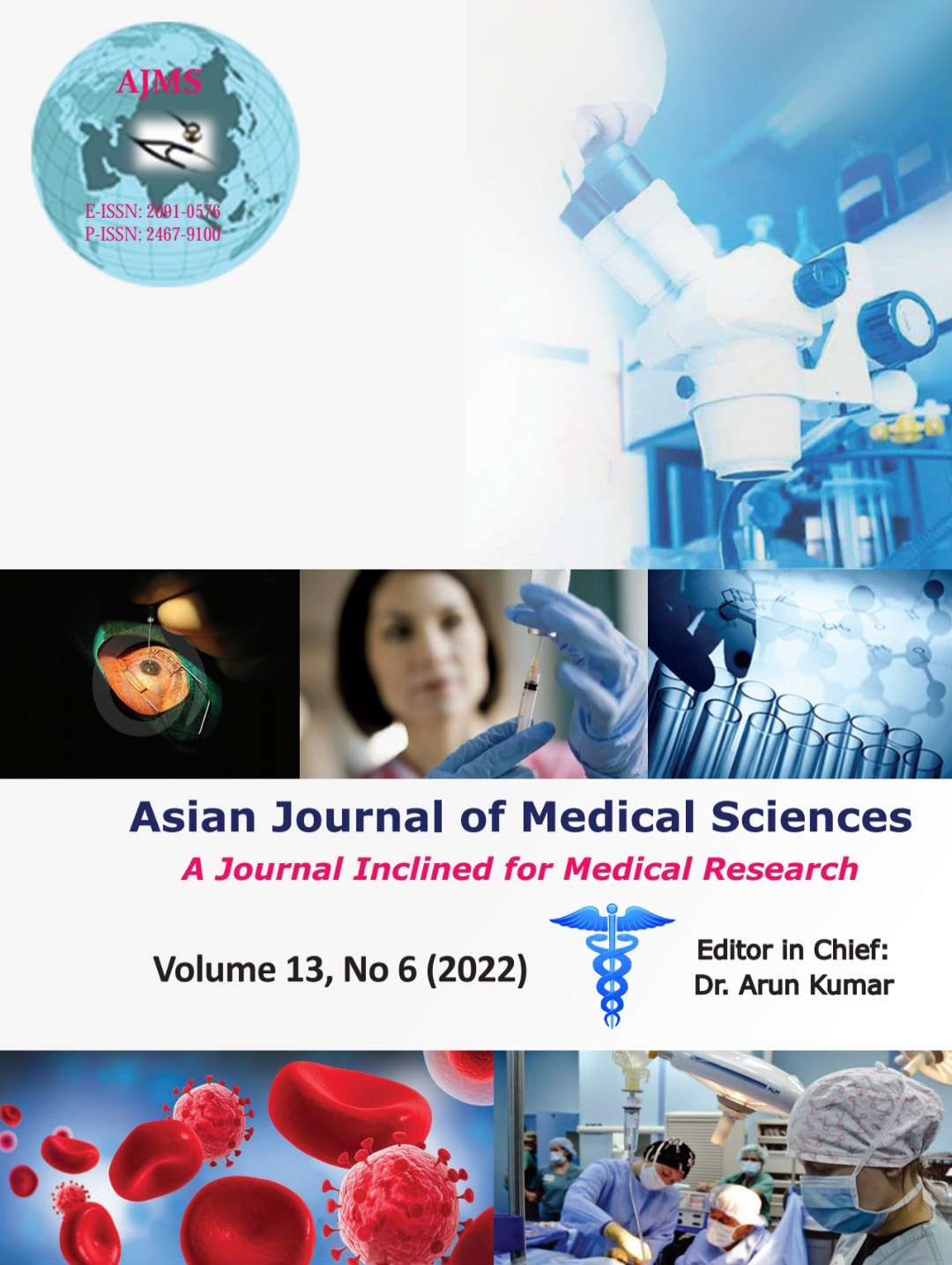Prevalence of hemoglobin variants and their effect on Hba1c measurement among the indigenous population of north Bengal attending a tertiary care hospital
Keywords:
Hemoglobin variants, Diabetes mellitus, HbA1C, High-performance liquid chromatography, ImmunoturibidimetryAbstract
Background: Several forms of hemoglobin variants might be present in the population being fully or partially silent. Furthermore, a high percentage of the population is already suffering from type 2 diabetes mellitus (DM) which is mainly monitored by HbA1c
estimation. As the structure of hemoglobin molecule is altered by the variant status hence, this might have an impact on the HbA1c estimation.
Aims and Objectives: The study aimed to assess the prevalence of hemoglobin variant and its effect on the HbA1c estimation.
Materials and Methods: Samples from 439 individuals were taken and evaluated for any hemoglobin variants,andalso, the HbA1c values were measured.
Results: About 27.4% of the study population were found to have hemoglobin variants, out of this 27.4%, 19.5% were Hb E carrier and 6.45% were Hb E diseased. About 22.3% of the population were suffering from DM. Hb variants had significant effect on HbA1C measurement in the overall study population and in the normal population with P<0.001. Two-way ANOVA also showed Hb variant and diabetes status significantly affected HbA1C value with P<0.001 in the study population.
Conclusion: All the patients should be properly evaluated for Hb variants before interpreting the results of Hb A1C to prevent improper management.
Downloads
Downloads
Published
How to Cite
Issue
Section
License
Copyright (c) 2022 Asian Journal of Medical Sciences

This work is licensed under a Creative Commons Attribution-NonCommercial 4.0 International License.
Authors who publish with this journal agree to the following terms:
- The journal holds copyright and publishes the work under a Creative Commons CC-BY-NC license that permits use, distribution and reprduction in any medium, provided the original work is properly cited and is not used for commercial purposes. The journal should be recognised as the original publisher of this work.
- Authors are able to enter into separate, additional contractual arrangements for the non-exclusive distribution of the journal's published version of the work (e.g., post it to an institutional repository or publish it in a book), with an acknowledgement of its initial publication in this journal.
- Authors are permitted and encouraged to post their work online (e.g., in institutional repositories or on their website) prior to and during the submission process, as it can lead to productive exchanges, as well as earlier and greater citation of published work (See The Effect of Open Access).




